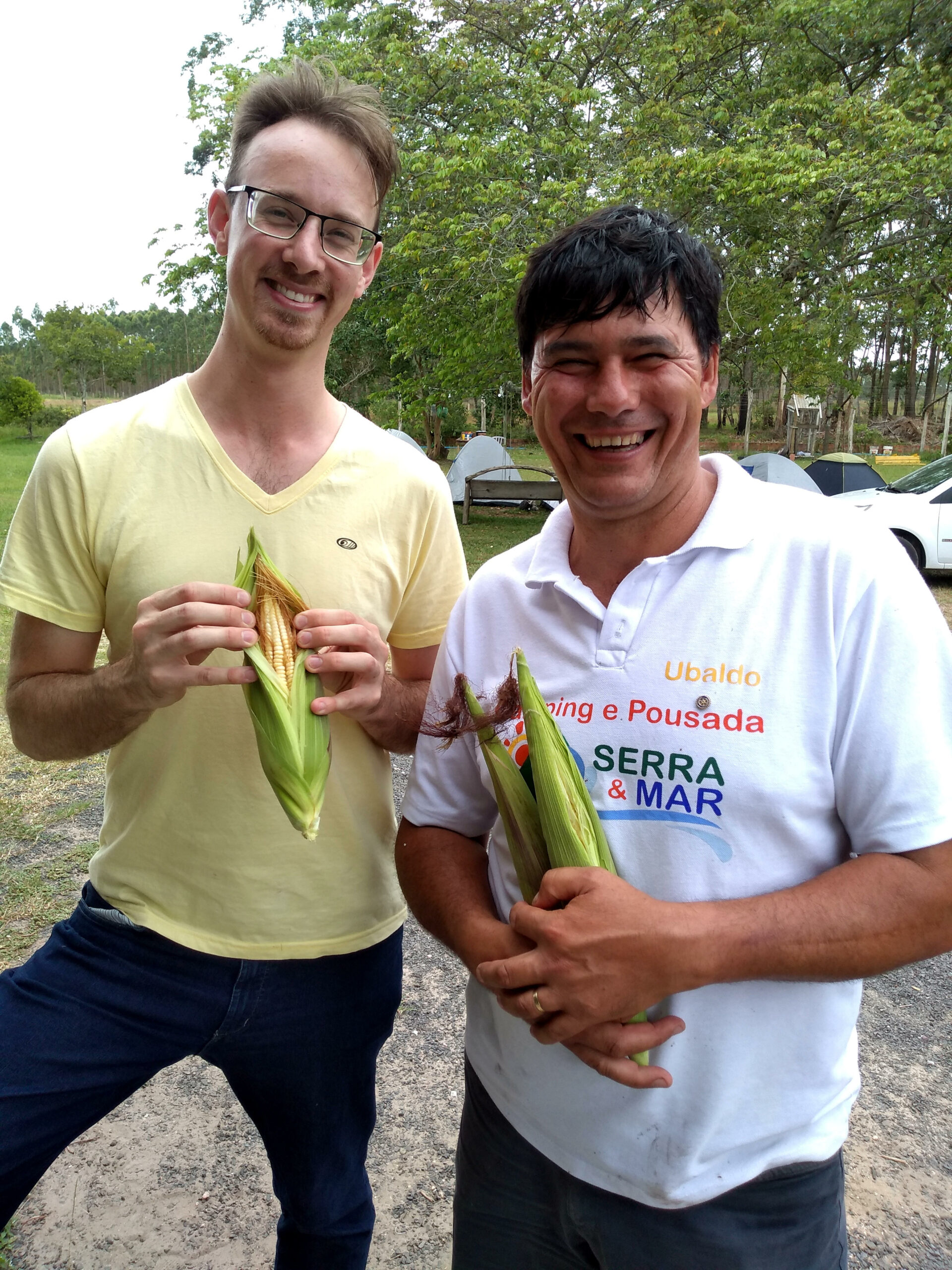First harvest and further planning
Since the implementation of the agroforestry system (AFS) at the Camping and Pousada Serra e Mar in September 2020, we have observed the beginning of the growth of a highly productive and biodiverse forest, composed of more than 30 species among trees and annual crops. During the last months, the work was carried out in collaboration with the owner of the property, Ubaldo Rosa with his family, who was present, where he carried out and monitored these works, together with the help of employees and volunteers and members of the project.
The work in Serra e Mar began in July, where first technical planning of the agroforestry system was carried out together with Ubaldo, and the following month, soil correction, organic fertilization and soil preparation were carried out. At the beginning of September, the planting was carried out, which lasted three days, following the guidelines of the technical planning, in which the planting lines and spacing were defined for the consortium cultivation of annual crops, production trees and service trees, planted for pruning purposes.
The planning and implementation phase of the demonstration area had the direct technical support of Gustavo Tramontin, Agronomist Engineer specialized in Regenerative Agroforestry Systems. The technical planning also includes the maintenance phase after the implementation of the area, with a detailed management plan of the pruning schedule, fertilization, management and seasons for cultivation.
After planting, the crops developed well, however, also grasses that compete for nutrients, water and sun.
-
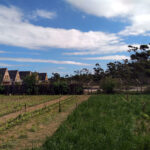
-
Planting lines left after and right before weeding
-
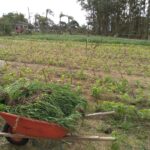
-
Due to the small planting distances it is manual work
-
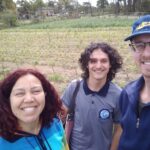
-
RG leader Kátia, TeoG member João and project leaderLutz
Therefore, at the beginning of October, the first weeding in the AFS lines was carried out by Ubaldo and his volunteers. In general, the trees and short cycle crops have shown good development. However, it was noted that the soil in the AFS area is not yet fully balanced. Even though a complete organic fertilization was provided, some parts of the plantation showed reduced growth when compared to others. This is completely natural, and is due to the fact that crops demanding in fertility have been introduced in an area of degraded land and low natural fertility.
-
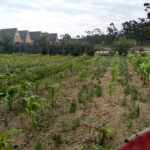
-
Different crop growth
-
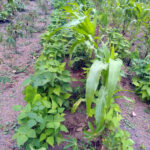
-
Consortium of beans, corn and cassava
-
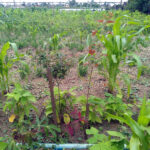
-
Annual crops that serve as shade for the tree seedlings. 🙂
Fortunately, with the proposed management system, through frequent pruning of trees and sowing of cover plants such as black oats, vetch, millet and crotalaria, the tendency with time is naturally to have a greater balance in soil fertility and, therefore, greater productivity and homogeneity in crop development.
The good news is that near the end of the year, the corn and bean crops gave their first fruits and the first harvest of SAF was held!
-
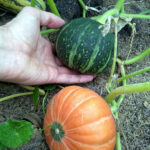
-
First pumpkins…
-
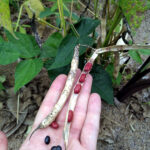
-
…red and black beans…
-
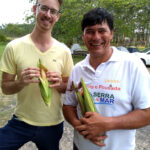
-
…as well as delicious corn!
In the new year, a technical visit was organized by project manager Lutz with Ubaldo and Gustavo. At the roots of plants, we found something very good: bacteria of the genus Rhyzobium, which are associated with the roots of legumes, such as beans, forming small nodules. The plant feeds the bacteria in its root system, in exchange the microbes remove nitrogen from the air and supply the plant. This mutual exchange relationship is called symbiosis. This phenomenon is very common in forest soils, but also in pastures and well-managed agricultural systems like agroforestry systems. Not only does it occur in leguminous plants, but also in several other plant species with different microorganisms. Another very common association in the root system of plants are the so-called mycorrhizae, which are the association of fungi with plants of various species.
The next steps after the harvest were defined and the technical project was updated.
-
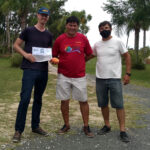
-
Visit from Alesson from the organic farmers network EcoVida
-
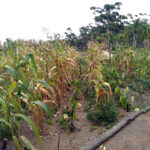
-
Consortia are developing well: maize, yam, cassava and beans are growing together.
-
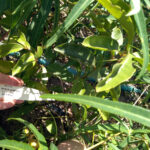
-
Suriname cherry seedling grows shaded from cassava
-
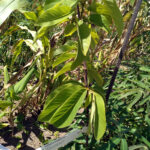
-
Atemoya seedling grows shaded from cassava
-
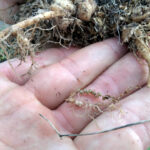
-
Our helpers: microorganisms at the plant roots
-
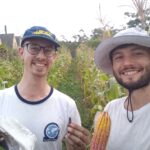
-
Project Manager Lutz and Agronomy Specialist Gustavo at the AFS inspection and first harvest.
In parallel, the idealization of the educational trail itinerary is in progress by João Barchik and Jonathan Damasceno, both members of Technology without Borders Brazil. The work includes the study of the definition of a path to be followed by the visitors and the development of the design of the signs. These plaques will explain several aspects of the project, such as for example:
- What is an Agroforestry
- How an Agroforestry works
- History and use of the land Serra and Mar
- Cycles and interactions in nature
- Types of trees used in the system
As the last work package of the project, it is preparing for the beginning of the construction of the shed, which will be used for educational purposes for local family farmers and as a seed bank.
Text: Lutz Michaelis
